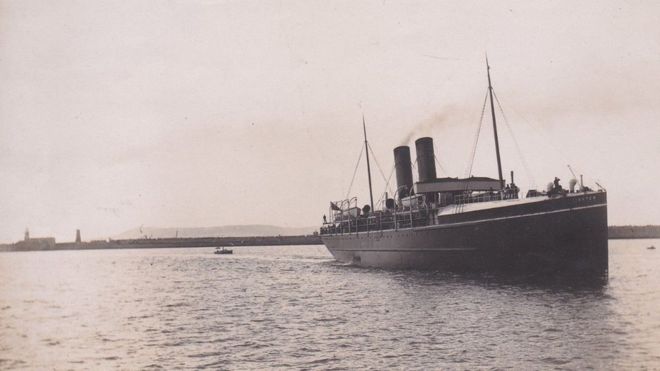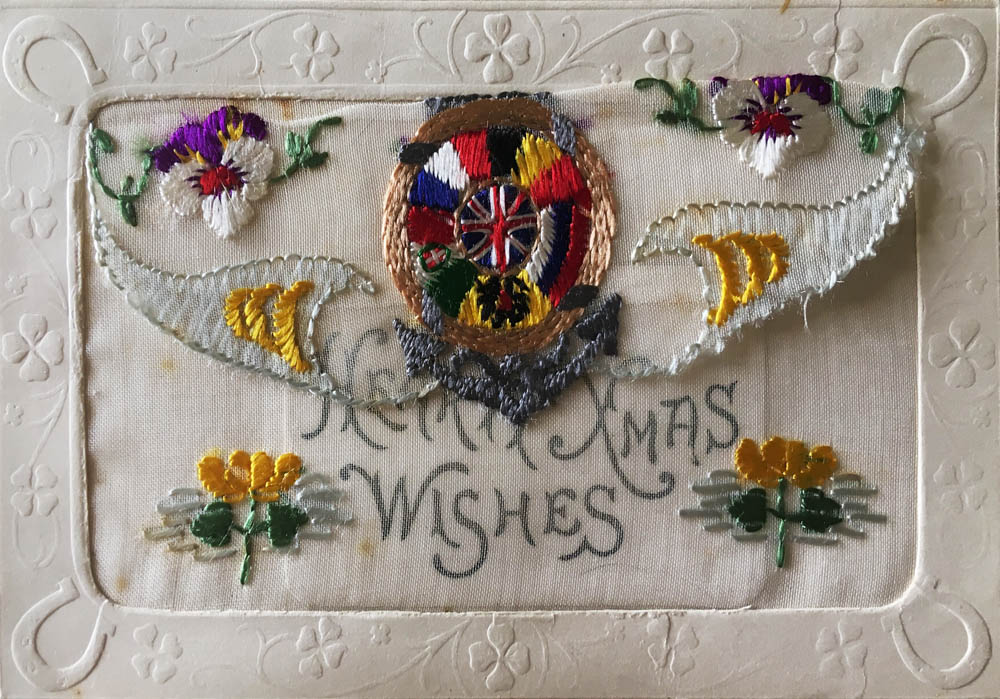On this day
Tweeting #OnThisDay1918 from the #diary of @OliveHarcourt a nursing auxiliary at #Beaucroft #redcross hospital pic.twitter.com/NAYXprpHzj
— Voices from 1918 (@VoicesFrom1918) September 5, 2018
Tweeting #OnThisDay1918 from the #diary of @OliveHarcourt a nursing auxiliary at #Beaucroft #redcross hospital pic.twitter.com/NAYXprpHzj
— Voices from 1918 (@VoicesFrom1918) September 5, 2018
A letter from Lyon on 11.9.1918 wrote “my family doctor recommends coitus interruptus” to which I replied “do not on any account use coitus interruptus. If you cannot get satisfactory help in using the cap you should try a sponge soaked in oil.
I went on to say “The free clinic in London is happy to give personal instruction to anyone who comes without any charge”.
Short article about 1918 flu during #WW1. The pandemic killed 228,000 people in Britain & 50-100 million worldwide. https://t.co/ttvfxvhBmf
— WW1 Lives (@ww1lives) 13 September 2018

The newspaper habit in exciting times - William "WK" Haselden's cartoon from the Daily Mirror struck a chord with Lady Monkswell who pasted it into her carefully indexed scrapbook crammed with cuttings from 1918.
Every day, Lady Mary scrutinises the newspapers with hawk-like attention to detail, writes her own pithy summary, and files away the news articles in huge scrapbooks for later study.
Her trick often is to know about the news before it appears in print.
1918; A brief respite from war.
— WW1cemeteries.com (@ww1cemeteries) 19 September 2018
Women of Queen Mary's Army Auxiliary Corps bathing at Paris Plage and a military policeman playing with a French child on the beach. (IWM pics)#Womenatwar #WW1 #GreatWar #FWW pic.twitter.com/0YXRrJWVAN
A battering of the senses from @InsideOutDorset last night with Furious Folly's immersive and moving outdoor WW1 performance in Weymouth #IOD18 @domkippin @billgee162a @scjutton @VoicesFrom1918 pic.twitter.com/Y7F4ed0VRo
— Alastair Nisbet (@alastair) 22 September 2018
Immersive, powerful, extraordinary WW1 outdoor performance from Furious Folly for @InsideOutDorset in Weymouth last night #IOD18 @domkippin @billgee162a @scjutton pic.twitter.com/TJbsoNlDfS
— Voices from 1918 (@VoicesFrom1918) 22 September 2018
German prisoners of war marching past the Atherley Cinema on Shirley Road during the First World War. pic.twitter.com/FH8czWWJGl
— Historic Southampton (@HistoricalSoton) 25 September 2018
T.E.Lawrence enters #Damascus w/ Arab troops, getting "a tremendous but impromptu greeting" from locals https://t.co/25DitntJy4 pic.twitter.com/4nSx90oZcY
— Tweets from WW1 (@RealTimeWW1) 1 October 2018
"If you this very night should ride to death, Straight from the piteous passion of my arms..." Forgotten female poet of WW1 Mary Borden to be honoured at armistice centenary https://t.co/K4AbnJSiJD @guardian @mariestopes1918 @LadyMonkswell @OliveHarcourt
— Voices from 1918 (@VoicesFrom1918) October 10, 2018
Hit in the leg by a British shell fragment, Guardsman Fred Noakes has to walk - or limp - two miles to a dressing station
We went over the top again at 5.30 and I was wounded just after six. It is a very cushy one, almost too cushy, for I am afraid it is not bad enough to get me to England. We knelt down to allow the barrage to go forward, when – whiz – crash! A shell screamed over my head.
— Fred Noakes (@fredtwells) 10 October 2018

The loss of RMS Leinster on Oct 10 1918 with more than 500 on board was the greatest loss of life in the Irish Sea.
The added irony pointed out by Lady Mary was that it came just four days after the Germans had asked US President Woodrow Wilson for peace
On 10 October 1918, the RMS Leinster departed from Dún Laoghaire en route to Holyhead just before 9am.
— Siobhán Doyle (@thekickart) 10 October 2018
With an estimated 771 passengers and crew on board, the ship was hit by three German torpedoes and sunk just before 10am with the loss of over 580 lives. pic.twitter.com/TguzDbmsgy
Short piece here about him: https://t.co/CzVWhwjXg3 His book Recollections of a prisoner of war sounds worth a read. Hopefully @LadyMonkswell will say more in her diary about him! @HLFSouthWest @shascreenplay @alastair https://t.co/eCURYfhdHB
— Voices from 1918 (@VoicesFrom1918) 13 October 2018
The battlefields filmed in colour in the 1930's by Anne Louise Avery's grandfather. “I cry every time I watch it. He only spoke of sharp fragments of his experiences - the time his pal, a regiment cook, accidentally cut off a couple of fingers in the horrendous cold, using pee to try to protect himself from mustard gas, friend after friend dying in front of him.”
Once more, as we approach Armistice Centenary, my grandfather's 1920s colour film of his pilgrimage to visit the trenches - the corn fields still strewn with rusting tanks, the war memorials freshly carved, the crosses of young lads still in greening oak. https://t.co/5nLx77clTn
— Anne Louise Avery (@AnneLouiseAvery) 14 October 2018
British sailors at a naval convalescent hospital playing a game of football, 1916. @FootballArchive @MemorabiliaMal pic.twitter.com/r7F2oYAeLK
— Jeff Nichols (@backwards_river) 17 October 2018
#WW1 Cheadle Hume Hospital. https://t.co/dgo3HetuGn pic.twitter.com/tZLbqKaMHS
— ww1photos .org (@WW1photos_org) 17 October 2018
#WW1 Soldier poses with two young french girls - https://t.co/Xy2fTYQ5g4 pic.twitter.com/drL1fmfWD1
— David Doughty (@DavidWDoughty) 21 October 2018
#WW1 #Wakefield nurse Nellie Spindler was working in 44 Casualty Clearing Station, Brandhoek. On 21st August 1917, the hospital was shelled all day. She was struck at 11am, became unconscious immediately, and died 20 minutes later in the arms of Nurse Wood, also from Wakefield. https://t.co/8OPUaTHPvn
— WW1 Lives (@ww1lives) 22 October 2018
Working on postcards for @HLFSouthWest project @VoicesFrom1918 @OliveHarcourt @mariestopes1918 @LadyMonkswell #RedCross hospital in #Wimborne pic.twitter.com/22a6pvat0O
— Sharon Hayden (@shascreenplay) November 1, 2018
Excited to be supporting this performance @BridportArts on Thursday 11.30am with our research from @VoicesFrom1918 book tickets here: https://t.co/EiXJdF6bJd @NerysW @HLFSouthWest https://t.co/iZUew8IQ5i
— Alastair Nisbet (@alastair) 6 November 2018
Just seen When Tommy Came Marching Home - wonderful WW1 show @BridportArts with @margiebarbour using our research to play @LadyMonkswell - music, drama, song, dance and a hilarious cookery demonstration - great fun @HLFSouthWest @DorsetArchives pic.twitter.com/2R5UJ9f5PD
— Voices from 1918 (@VoicesFrom1918) 9 November 2018
#Armistice2018 commemorate cards for our @VoicesFrom1918 project funded by @HLFSouthWest of @OliveHarcourt who was a nursing orderly at #BritishRedCross hospital in #Dorset pic.twitter.com/yWo9TnyVSw
— Sharon Hayden (@shascreenplay) November 9, 2018
As it’s Remembrance day, I thought I’d share a few pictures from a diary I have from the WW1. My Great Grandma was a nurse in Southport and she asked the injured soldiers she tended to, to fill the diary. Lest we forget. ❤️ pic.twitter.com/PcNvnCDJnt
— Alice Schofield (@aliceschofield_) 11 November 2018
Congratulations! Glory! Hallelujah! Viva! Hurrah! The War – THE WAR IS OVER!! Hurrah! Hip, hip, hurray! We have just had the official information from the CO on parade. I can’t help writing off at once, though I really ought to wait until I am in a calmer state. pic.twitter.com/BDxie5ipe9
— Fred Noakes (@fredtwells) 11 November 2018
Can anybody help us explain this Christmas card sent home by an officer in Belgium in November 1918? Saint George and the Dragon, fight between good and evil could refer to Belgian festivals at Tournai or Mons and the Fleur de Lis could be Lille but whose is the flag ?@LivesOfWW1 pic.twitter.com/TwLtmOCwNI
— Voices from 1918 (@VoicesFrom1918) 17 October 2018
Did we say? We've made some postcards. Four about our 1918 diarists and three prints of embroidered WW1 Christmas cards with envelopes. Send us an sae and we'll post you a set of each. Voices from 1918, 29 Mellstock Ave, Dorchester DT12BG @IWM_Centenary @DorsetArchives https://t.co/48hbAmRV1y
— Voices from 1918 (@VoicesFrom1918) November 21, 2018

The story of Olive’s embroidered Christmas cards from the front from BBC Breakfast in Dorset 19 December 2018
Letter to Essie 23.12.1918
The pig has been killed. At one time it was feared he would die a natural death from too much lorry travelling but has survived all the moving and met his end yesterday morning. Reading: 'Beyond', John Galsworthy, (1917)
James Sansom: James Sansom 28 Dec 1918
We are having an easy time now - no parades, get up what time we please and the people are very good to us. We get plenty of sport here. We have several concerts and have a good time generally .
At Xmas plenty to eat and drink for those who like it and we spend a lot of time with the villagers.
03.01.1919 Alfred Johnson, letter to Essie I have been playing football to-day the first time I have played in a match since the Artist days. I think all men with jobs with be demobilised fairly soon. They are demobilising 5000 a day now and that is soon to be nearly doubled.
[Johnson played football for the University of Manchester team where he studied classics in the early 1900s]
04.01.1919 Letter to from Artillery Lieutenant Alfred Johnson in Belgium to his wife Essie: It appears we are not off to Germany at least not for the present, which is rather disappointing
The Morning Post: Military Awards For services in France and Flanders A.F. Johnson, Military Cross
Olive Harcourt’s diary Jan 7th 1919
Men’s concert at Beaucroft Hospital. Mrs Smith went with us, fearful squash. They were dressed as Pierrots in white pyjamas, with paper pompoms and ruffs, Macken, Stubbs, Woodhead and Jacobs the best. The little play “The Area Bell” with Nurse Coggin.
Sidney Macken and Arthur Stubbs really good and amusing. We had a nice talk with them and Fred Woodhead on the stage afterwards.
Letter from Alfred Johnson to Essie, 8.01.1919 on Bruxelles Palace Hotel headed paper. Brussels is certainly a very fine town. We have been to the galleries, with sculptures by Rodin...
Various fair ladies tried to lead us astray and Lee was quite alarmed but I rather enjoyed it.

Pictures from the touring production Escaping the Storm, which uses some of our research from Voices from 1918. Jane McKell plays the older Marie Stopes.
Dr Stopes, I presume ? @JaneMckell as Marie Stopes in their new touring production Escaping the Storm by @AsOneTheatre @DorchesterArts last night. Returns to Dorset Feb 14 @weypavilion pic.twitter.com/c6ZaDCBc5c
— Alastair Nisbet (@alastair) 17 January 2019
25.01.1919 Letter to from Artillery Lieutenant Alfred Johnson to his wife Essie:
I don't know what I got the MC for. The Major put my name in last September for things in general I think. That is all I know. We went to Dinant yesterday.
We have demobilised a good many men, sent about 40 away to heavy batteries to help with the horses.
The weeks drag on as Lieutenant Alfred Forbes Johnson waits to be demobbed - and he worries about his family and going back to his job at the British Museum.
He writes: “I found I could not sleep and began to think of nasty things in the war, so to stop that I tried to recollect early events with you.”
Then in March 1919 “There has been some good news since I wrote last. Officers who were in the Army in 1914 and who do not wish to stay on, are now to be released. I am under that, so it is only a matter of waiting for our allotment.”
The rest of his battery move on to Cologne and Bonn and have a good time going to concerts
Finally... a telegram from to his wife Essie on 17 April 1919 Arriving Dover today - home tonight
We’d love to hear from you
Let us know what you think of Voices from 1918 and our podcasts - login to the form below using Facebook.

Using this blog
Explore by day, month or person here on the blog or on our five Twitter feeds: @Voicesfrom1918 @LadyMonkswell @MarieStopes1918 @JamesSansom230 and @OliveHarcourt.
Voices from 1918 has been developed by artists Sharon Hayden and Alastair Nisbet in partnership with Wimborne Community Theatre, Dorset History Centre and the Priest’s House Museum, Wimborne with funding from the Heritage Lottery Fund.
Thanks to all who have helped us with this project: Maria Gayton and staff at Dorset History Centre where we found Lady Mary Monkswell’s diaries; Joan Cocozza, ward of nursing auxiliary Olive Harcourt; Portland Museum where we found James Sansom’s diaries; the British Library and Wellcome Libraries; Priest’s House Museum in Wimborne and Gill Horitz from Wimborne Community Theatre.
We’ve used a new simpler type of blogging system which we beta tested for indie developer Janis Rondorf of Instacks software.
Posts created as simple text files are dropped into a folder on the webserver without the need for complicated formatting making it easy to upload material quickly.
We’re always happy to share more details about our work - email us using the link at the bottom of the page and we’ll get back to you.